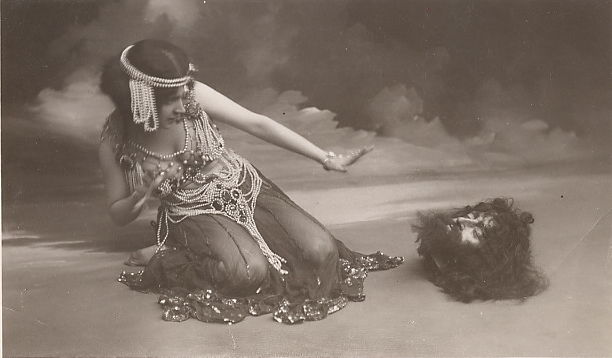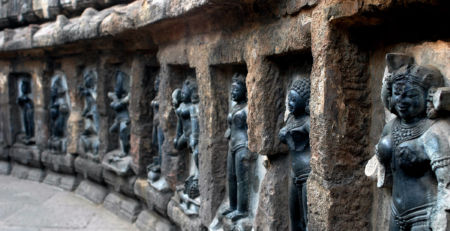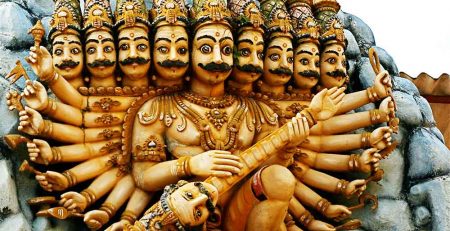Dance of the Seven Veils, Striptease and Travel
History of the famous Dance of the Seven Veils, its link to the origin of striptease and how it is similar to Travel experiences
I have always felt travel is a bit of a strip-tease like the famous proverbial Dance of the Seven Veils. Most times that I travel to a place, I find some facet of the place, its history, culture, etc., to get excited about. The funny thing is that when I visit the next time and the next, I find something else to get excited about. Has it happened to you also? This happens to me with some movies, novels, poems or even, at times, people.
This is why I call experiential travel, the Striptease of experiences. The gradual revealing of facets leads to more curiosity, intrigue and enchantment. The joy of experiential travel is in removing the veils that cover a place. Why seven, you say? Why not, I say. 😉
Let me tell you a bit about veils, the concept of the Seven Veils and striptease. A tad long, but interesting, I daresay, with comics, history, religion, literature, plays, operas and salacious dances. Not unlike a Bollywood film, what? Read on…
Who was Vera of the Seven Veils?
I was a kid when I grew quite fond of a less-known comic strip called the Adventures of Legionnaire Beau Peep. It used to come as a strip in The Telegraph newspaper in Calcutta where I grew up. It was a British comic strip (a parody of the famous Beau Geste novel By P C Wren) about a cowardly, clumsy Brit, Bert Peep. He joins the French Foreign Legion in Africa to escape Doris, his wife back home. He even changes his name to Beau Peep to ensure Doris doesn’t find him! While Beau Peep is a loser, he is quite a likeable one – much like Schulz’s Charlie Brown. There are many supporting characters in his adventures. One of them is the dim-witted Dennis, Beau Peep’s best friend.
Another is Vera of the Seven Veils. She is a belly dancer at the local bar and all the soldiers at the fort are crazy for her. Dennis is head-over-heels in love with her, while Vera of the Seven Veils possibly doesn’t know he exists. Quite relatable for a young boy in his growing-up years, don’t you think? 😉
But, enough about the comic and back to the story. I understood the concept of veils on a belly dancer. But why seven, like many of you would have felt earlier. Here’s why.
What is the Biblical story of Salome and her Dance?
There is a Biblical story about Herodius, a princess of the Herodian dynasty of Judaea in the Roman times. She divorced her husband Herod II and married his half-brother Herod Antipas. John the Baptist criticized this flouting of the rules. Antipas imprisoned him.
Salome was the daughter of Herodius from her earlier marriage. She was hence both Antipas’s niece and half-daughter. Antipas asked Salome to perform a dance for his friends on his birthday. He offered her a reward of her choice if everyone liked her dance. Herodius convinced her daughter to dance her heart out and in reward, ask for John the Baptist’s head on a platter. She danced. Got her reward. And John lost his head.
Oscar Wilde, The Dance and Striptease
In 1891, Oscar Wilde wrote a French play called Salome, on this story. The English translation came out in 1893 where Salome’s dance before the King is called “The Dance of the Seven Veils” for the first time. England banned the play but it did well in a few other countries. Richard Strauss included the dance in his famous opera “Salome”.
Though the Bible doesn’t mention the nature of Salome’s dance, many earlier French writers portrayed Salome as a symbolization of female lust. Huysmans calls her monstrous and beastly. She was a mystery due to her “veiled” nature for Mallarme.
Oscar Wilde started the idea that Salome’s dance involved seven veils. He has only hinted at the dance being one of unveiling in stages. Many believe that the origin of striptease as a dance form was from Wilde’s play.
Strauss’s operatic adaptation of the play also features the Dance of the Seven Veils (though not named specifically). It focuses on Salome’s obsession with John the Baptist.
The Dance of the Seven Veils in modern times
Huge popularity ensued for Wilde’s play and Strauss’s opera. This led to “Salomania” – performances inspired by the eroticism in Salome’s dance. Many of these dances deviated from the understated sexuality of the originals and bordered on the salacious. This increased the popularity of Striptease as a dance form – some memorable and some scandalous. Most of them involved the performer wearing seven veils in the beginning and dropping them one by one as the performance progressed. Many operas and plays later, in 1953, the phenomenal Rita Hayworth performed the dance as a strip dance in the film “Salome”. A similar performance was by Brigid Bazlen in the 1961 film “King of Kings”.
It was variously called the Veil dance or the Belly-dance or Veils of Vapor, etc. These were supposed to be oriental or Middle-eastern dances. In reality, it was more of what the Western-world believed to be oriental dances! And to aid tourism, these countries also showcased these dances as traditional dances to ensure tourists got what they expected… 😉
Incidentally, have you heard of the infamous Mata Hari? She was a beautiful, double-crossing spy who worked for both the Germans and the French during the World War I. She was born in the Netherlands (real name Margaretha Zelle Geertuida) and later became an exotic dancer and spy. Her most famous act was an artistic striptease that some called the Dance of the Seven Veils. It made her hugely famous and rich other than helping her work as a spy. She was caught and executed for espionage. Her life has been the fodder for many novels, stories and more than 10 films.
The Symbolism in The Dance
The roots for the Dance of the Seven Veils are deemed by some to be in the ancient Sumerian or Babylonian legends of the Goddess Inanna or Ishtar. She has to descend to the netherworld passing through seven gates in search of Tammuz. At each of them, she is required to shed one symbol of her status. She finally reaches the “Land of no return” as her pure Self. This journey is possibly a metaphor for enlightenment that comes from shedding the veils of illusion. The journey itself is one that is into the self/ self-realization. These seven veils are suggested to be Dreams, Reason, Passion, Bliss, Courage, Compassion, and Knowledge.
In Hindu philosophy, it is a kind of shedding of Maya to attain Moksha. And hence, the idea of Striptease wasn’t the prurient one that is often used now, but the throwing away of Maya to reach the ultimate state of truth.
Now to the question of why seven – this was a significant number across the ancient world (for example, the SaptaRishi or the 7 great sages in Hindu mythology). There can be many reasons for this. Possibly, this is because the ancients could see seven celestial objects in the skies with the naked eye – Sun, Moon, Mercury, Venus, Mars, Saturn and Jupiter.
Travel, Striptease and the Dance of the Seven Veils – What’s the Link?
Don’t you think travel is a bit like this? For instance, the first time that I visited England on a rushed official trip, it was just the bustle of London. I liked it. England was energy and speed for me.
The next few times that I visited the country, I discovered a different side to England with its interesting experiences like the Jack the Ripper walk, Tower of London and Baker Street (of Sherlock Holmes fame). Subsequent trips revealed to me the joys of whiling time away at Hyde Park, the quaint pubs in the small alleyways, the charms of the Balti Triangle in Birmingham, the stunning natural beauty of Lake District, the home of the Romantic poets, Stratford-upon-Avon, home of Shakespeare, Oxford, Cotswold, Bath, Stonehenge, Kent and Dover. The list can go on… And despite many trips to England, I am sure the next time I visit the country, England will drop another veil to let me discover still more.
That’s why, for me, travel is like a Dance of the Seven Veils – an exercise in experiential striptease. This is what makes travel so addictive for me. And that’s why “A lifetime isn’t enough to travel the World”.
Dance away, World – I’m trying to discover as much as possible! 😉
An interesting cultural/ religious practice that has almost been completely erased even from the collective memory in India is the Chausath Yogini cult of the divine feminine. To lift the veil off this forgotten cult, read more about it here https://beyonder.travel/information/the-chausath-yogini-cult-celebrating-the-feminine/
If you, like me, are a fan of experiential travel, click here www.beyonder.travel, pick your choice of place/experiences and get ready to start witnessing places dropping their veils…












Leave a Reply